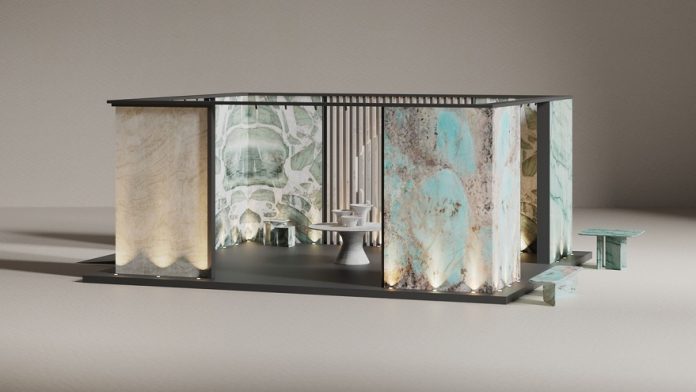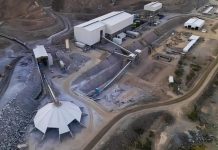In architecture and interior design, the concept of biophilia is a way to bring the environment into urban spaces, promoting well-being, emotional comfort and a sense of relaxation. And these are some of the feelings that FuoriSalone visitors will experience upon entering the Stone Pavilion, located at the Università degli Studi di Milano as part of the INTERNI Design Re-Evolution exhibition. The event takes place during the Milano Design Week – Fuorisalone, one of the largest design showcases in the world, from April 17th to 26th in Italy, which brings together architects, designers, builders and influencers from all over the world.
Created by the architect and designer Vivian Coser, the design intervention is a realization of It’s Natural – Brazilian Natural Stone, a project to encourage exports of Brazilian ornamental stones, conducted by the Brazilian Center of Natural Stone Exporters (Centrorochas) in partnership with the Brazilian Trade and Investment Promotion Agency (ApexBrasil). The Brazilian pavilion will be a disruptive space in the city using plants with green-yellow DNA, in composition with eight different materials and focusing on the promotion of Brazil’s natural richness and different application possibilities.
Among the various types of existing Brazilian stones, quartzite has been gaining a prominent place. Brazil is the largest producer and supplier of this material which has only recently become known due to the technology advancement. Besides quartzite, semi-precious stone and dolomitic marble will be presented at the Milano Design Week – Fuorisalone. In the Stone Pavilion the stone will be displayed in the form of slabs and design pieces. The materials were supplied by six different companies: Cajugram (Apollo Ligh quartzite), Dapaz (Vanilla Sky quartzite), Decolores (Da Vinci quartzite), Gramazini (Polaris quartzite), Granistone (Speranza quartzite and Amazonite semi-precious stone) and Pedra do Frade (Natura quartzite and Lunar dolomitic marble).
“This careful choice includes the finest marbles, quartzite and crystals. These materials support a variety of textures and patterns that replicate the sensory beauty we experience in nature,” highlights Vivian Coser.
Sustainability
Owner of the greatest geological diversity in the world, Brazil has a large industrial park for the supply of blocks, finished and semi-finished products, works of art, design, architecture, among others. Thanks to the technological capacity of production, the country sees its stones go through modern and environmentally sustainable processes.
More than 95% of all the water used in the production process is totally reused, and the production residues are reused or destined to licensed deposits. The sector also has the lowest CO2 emission rate in production, compared to other coating options used in architectural projects.
Actively participating in the Green Building Council Brazil, Vivian Coser reinforces the sustainability of natural stone. “It does not contain any harmful chemicals or toxins. Moreover, the material can be easily recycled and reused, which can extend its useful life, while preserving energy, water, and other essential resources,” added the architect who is also an ambassador for Instituto Terra (an institute founded by the photographer Sebastião Salgado and his wife Lélia Wanick Salgado, focused on sustainable practices and environmental recovery).




































